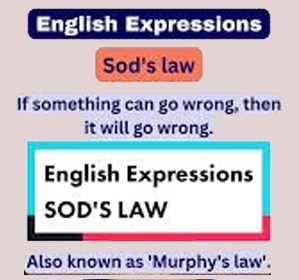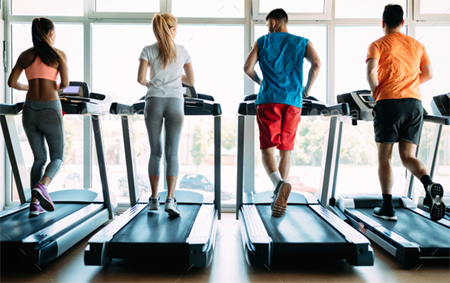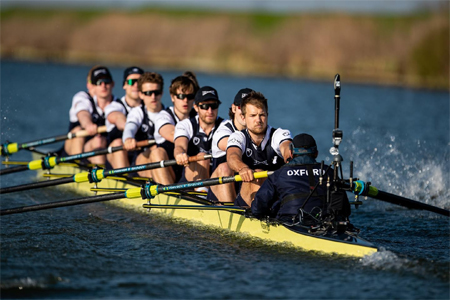-
Sod’s Law
My hip aches, but that has nothing to do with Sod’s Law (or Murphy’s Law, which we will examine in a bit), it just is. It’s not debilitating, or even painful; it’s more like a fly buzzing around my head that will not go away. For fifteen fucking years. Until, of course, … but we’ll save that for Sod’s Law.
First the ache.
I don’t want this to become an Old Man’s Blog, because I don’t consider myself old, and neither does the WHO. To them, I am middle-aged, and will be for some time. But middle-aged, old, or (sad to say) young, the aches will find you. The number of birthdays you have is in direct proportion to the number of times your body will let you down. And I’m a little miffed by this. I think I’ve treated my body pretty well, so to turn on me seems ungrateful, and just a bit rude.
But turn on me it did, with a sore back, and then an aching hip, that I heroically endured for over a decade. (Seriously, it wasn’t bad, and I don’t want to minimize the torment that people with real chronic pain are going through.) I rarely gave it a thought, but when—after fourteen years—it didn’t go away, I had a quick conference with Dr. Google and was assured that most of these aches have no cause or cure; they come, they linger, and, sometimes, they go. That, along with the comforting fact that the pain had become no worse over the years, encourage me to ignore it.
Until a few months ago.
So now, Sod verses Murphy: Murphy’s law is an actual design principle that states, if a process can be run in a way that will produce an undesirable outcome, someone will find a way to run the process in that manner, or more succinctly: if something can go wrong, it will. Sod’s Law is more concerned with the inevitability of rain on the one day you forget your umbrella.

Incorrect! They are NOT the same thing My hip pain began to get worse, to the point where it was outwardly noticeable: I limped, I couldn’t climb stairs without wincing, and I had a lot of trouble sleeping. With my quality of life—and by extension, my wife’s quality of life—degenerating, I decided to do nothing. But my wife encouraged me to look into doing something, anything, so I mentioned it to my doctor and was given a means of referring myself to the Pain Clinic. And did nothing.
Eventually, I made a bargain with my wife: we had a two-week holiday coming up, and if the pain was still there when I returned, I’d contact the clinic.
Why I thought, after 15 years, the pain would suddenly go away, I can’t imagine. In reality, it didn’t; it got worse. Much worse. So, I made the call and was fast-tracked to an Escape Pain Class to take place in a month’s time. I was in enough pain by then that I was relieved and looking forward to the course.
A few days after the call, the pain suddenly, inexplicably, went away. Sod’s Law.
So now I am in a class with people experiencing real pain, while I sit there like a lump, having to say, “Actually, nothing hurts,” when the instructors ask.
And the course, which emphasizes exercise, is basically designed to get us to sign up to the gym, while the overall goal is the free up the NHS waiting list. Getting us pain-free is a consideration, but it knows its place.

Just sayin’ I have therefore been introduced to big, complex—and, one must suppose, horrendously expensive—machines. Machines with touch screens that you can program for time, speed, incline, and a dozen other options. And, once programmed and booted up, you can … walk. As if I don’t do that every day. And as if that isn’t the very thing that used to exacerbate my hip pain.

Basically, you’re walking So, I tried the other machines, the stationary bicycles in case you don’t have a bike, and the rowing machine in case you don’t live in Oxford and have access to a rowing club, and the elliptical cross-trainer in case you don’t have access to an ellipsis. There was also an electric stair machine in case you don’t have access to a staircase, or a box, or a few books you could pile up.

Okay, you probably don’t have one of these lying around These machines, however, were useful, and fun to drive but, upon waking up the following morning, I became startlingly aware of muscles I hadn’t known I possessed; muscles that these machines put to work, and which were now complaining. Loudly.
And so, the irony is: I am pain-free, but in a class that is encouraging me to work on a machine that simulates the activity that made my hip ache in the first place, in order to help the pain I no longer have go away, while my other muscles are screaming, “What the fuck are you doing to us?!”
The class is six weeks. I have five more to go. And you can bet, as soon as it’s over, my hip will start hurting again. Sod’s Law.